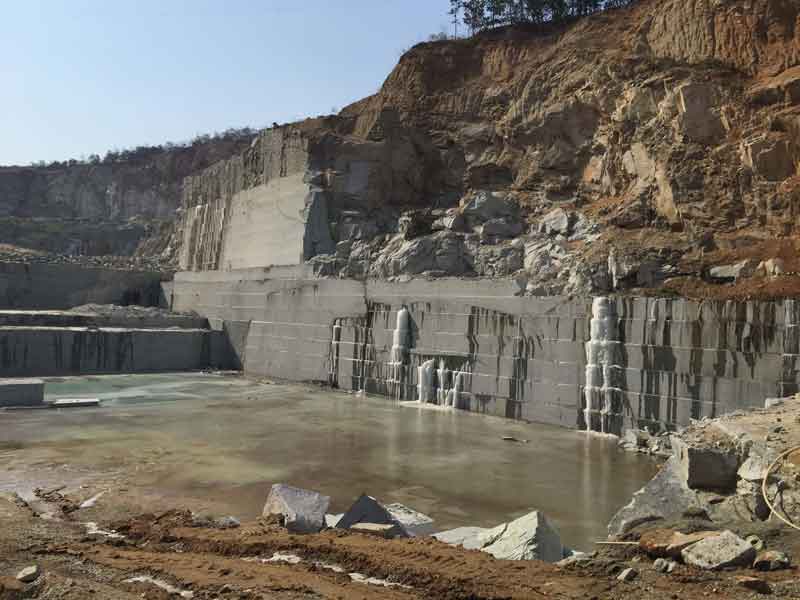Checking Out Granite Quarries in South Africa: A Comprehensive Guide
Checking Out Granite Quarries in South Africa: A Comprehensive Guide
Blog Article
Introducing the Mysteries of Granite Quarrying: Where Toughness and Beauty Meet
The globe of granite quarrying is a realm where the raw strength of nature merges with human artistry to create frameworks that stand the examination of time with an air of beauty. From the midsts of quarries to the meticulous polishing in workshops, the procedure of transforming granite right into architectural marvels is an intricate dancing of tradition and technology. As we peer into the midsts of this ancient craft, we begin to uncover the concealed intricacies that form the very essence of our constructed setting.
The Origins of Granite Quarrying
In the annals of building history, the beginnings of granite quarrying are shrouded in a tapestry of ancient craftsmanship and geological wonders. Dating back to ancient Egypt and Mesopotamia, the removal of granite from quarries marked the start of a journey that would ultimately cause the creation of a few of the globe's most iconic structures.
Granite quarrying's roots can be mapped to the proficient craftsmens who identified the rock's resilience and visual allure. With a mix of primitive tools and sheer decision, these very early quarry workers unearthed granite blocks that would become the building blocks of people.
As human beings evolved, so did the techniques of quarrying granite. The Romans, renowned for their engineering prowess, developed sophisticated techniques for drawing out granite to build monuments, temples, and roads that stood the test of time.
The tradition of these ancient quarrying methods remains to shape modern architecture, with granite remaining a symbol of strength and elegance in building jobs around the world. (granite quarries in south africa)
Tools of the Quarrying Profession
The advancement of granite quarrying methods from ancient worlds to contemporary times highlights the essential function played by the tools of the quarrying profession in shaping the sector's methods. In ancient times, quarrying devices were simple, usually containing blades, hammers, and wedges made from products like bronze or iron. These tools required considerable manpower and time to extract granite obstructs from quarries.

Additionally, the introduction of pneumatic devices and high-powered machinery has dramatically lowered the physical labor called for in quarrying procedures, enhancing worker security and efficiency. As the quarrying sector remains to introduce, the tools of the profession continue reading this remain at the leading edge of driving development and shaping the future of granite removal.
Extracting Blocks of Granite
Making use of accuracy equipment and progressed strategies, the removal of granite obstructs from quarries has actually ended up being an advanced procedure in the modern quarrying industry. Regulated blowing up methods are then employed to break apart the granite right into workable sections.

Sprucing Up and Completing Methods
To achieve a flawless surface area on granite blocks, competent artisans employ a collection of thorough sprucing up and completing methods. After the initial removal and forming processes, the granite blocks undergo a complete sprucing up phase to enhance their natural charm and sturdiness. One typical method used in brightening granite is ruby abrasion, where commercial diamonds are used to grind and brighten the stone to a smooth coating. This procedure not only creates a lustrous surface yet likewise guarantees uniformity in shade and structure throughout the granite block.
Along with sprucing up, finishing methods are put on more refine the granite's look. These strategies may consist of flaming, sharpening, or brushing, each offering one-of-a-kind structures and coatings to suit various aesthetic choices. Flaming, as an example, includes revealing the granite surface to heats to develop a harsh, textured coating, ideal for exterior applications where slip-resistance is vital. Sharpening, on the other hand, offers a matte coating that is smooth to the touch, best for indoor kitchen counters and floor covering. By carefully picking and using these polishing and ending up strategies, craftsmens can transform raw granite obstructs into elegant pieces that showcase both stamina and sophistication.

Ecological Effect and Sustainability
With the growing focus on environmental consciousness in the industry, granite quarrying techniques are progressively scrutinized for their effect on natural sources and long-lasting sustainability. Quarrying for granite can have substantial ecological implications. The removal process often entails the use of hefty equipment, explosives, and huge quantities of water, leading to environment destruction, dirt disintegration, and water contamination. Additionally, the transportation of granite from quarries to refining centers produces carbon exhausts, even more adding to environmental destruction. granite quarries in south africa.
To alleviate these influences and make certain sustainability in granite quarrying, industry stakeholders are embracing different procedures. Implementing advanced innovations to minimize power intake and water use, redeeming quarried land for ecological remediation, and promoting responsible sourcing practices are some techniques being utilized. Accreditations such as the Woodland Stewardship Council (FSC) and the Leadership in Energy and Environmental Design (LEED) help consumers identify ecologically friendly granite products.
Conclusion
Finally, granite quarrying is a procedure browse around these guys that needs specialized tools and strategies to essence blocks of granite and polish them to a high level of finish. While the ecological effect of quarrying can be significant, initiatives are being made to enhance sustainability practices in the sector. On the whole, granite quarrying is a delicate balance in between taking advantage of the stamina and elegance of this all-natural rock while reducing its effect on the environment.
Report this page